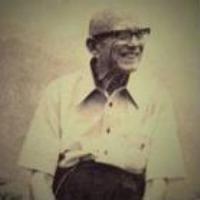Copy Link
Add to Bookmark
Report
Line Noiz Issue 10

BEGIN LINE_NOIZ.10
I S S U E - ! ) F E B R U A R Y 2 4 , 1 9 9 4
>LiNE NOiZ< >LiNE NOiZ<
- - - - - L - i - N - E - - - - - - - - - - - - - - - - - - - - - - - - -
!#@&$%$(^ N % O * i ! Z _&@)$!^$_!(_)(_@$(#)*$*&)(@(_!%)*@)&#*_(^))%$)*$@
CYbERPUNk I N f O R M A t i O N E - Z i N E
||||||||||||||||||||||||||||| L i N E N O i Z ||||||||||||||||||||||||||||||
I S S U E - ! ) F E B R U A R Y 1 4 , 1 9 9 4
: File !
: Intro to Issue 10
: Billy Biggs <ae687@freenet.carleton.ca>
: File @
: Information Superhighway
: Billy Biggs <ae687@freenet.carleton.ca>
: File #
: Square One (Part One)
: Kipp Lightburn <ah804@freenet.carleton.ca>
: File $
: "I'm Slaving" v 1.2
: @Man of Silicon Valley Style <shaunc@faceplant.gvg.tek.com>
: File %
: Cyberhouse
: Kajetan Hinner - Eye of the Shadow <uf341ea@sunmail.lrz-muenchen.de>
----------------------------------------------------------------------------
File - !
Here we go wrapping up ten issues of Line Noiz! So, please write me to tell
me what you think and how I can improve. I've been putting off sending out
this issue because I have been writing up the big article on Information
Superhighway. Well, I finally finished (it took me 5 times longer than it
should have).
Of course since it came out so late, I have had an accumulation of stuff to
send out. LN11 will be out VERY shortly.
-Billy Biggs, editor.
--NOTICE:
IF you subscribed and HAVEN't recieved any issues, mail me and I'll fix the
problem.
-*- Subscription Info -*-
Subscriptions can be obtained by sending mail to:
dodger@fubar.bk.psu.edu
With the words:
Subscription LineNoiz <your address>
In the body of the letter.
Back Issues can be recieved by sending mail to the same address with the
words BACK ISSUES in the subject.
----------------------------------------------------------------------------
File - @
--> INfORMAtiON SUPERhIGhWAY <--
"Life is a (information) highway"
"a seamless high-speed network carrying data, voice and video"
"Buisiness without boundaries"
"Now, eat your fibre deary..."
The world is changing faster than people think. Either that, or people
are thinking faster than the world is changing. Lately, media attention in
the world of technology has focused on the "information superhighway", a
high-speed network carrying data, voice and video. The possibilities of this
are endless, the list of advantages extend for miles. But just how far is this
away? Technically, we are now using the data superhighway, with Internet.
Anyways, this is a compilation of interesting facts associated with the
superhighway. How this superhighway will be paid for, used and hacked will
have to be discussed later on.
----- What it is ------------------------------------------------------------
[ In essence, the superhighway wants to become Internet. The advantages of ]
[ Internet and the way in which it is administrated make it the perfect ]
[ example for how this 'superhighway' should be run. ]
[Financial Post]
[...] While it may hook up with the copper wires of the phone system, or
the coaxial cable of cable companies, the highway will be built primarily of
high-capacity, lightning-fast fibre-optics cable.
[...] In the home, an integrated home entertainment/education system
will allow easy access to a range of services.
The heart of the beast will be a multimedia personal computer with vast
storage capacity, and the ability to record and store whatever content
emerges from the highway - television or cable programming, music or computer
data. PCs with this type of multimedia capability already exist: notably
the Indy from Silicon Graphics Inc., which comes with a built-in camcorder.
[The Globe and Mail: Report on Buisiness]
[...] This industry, predicts Apple Computer Inc., could be worth $3.5
trillion (U.S) by the turn of the century.
[DISCOVER: Jan. 1994]
[...] But what's needed even more is a coordinated effort by government
and industry to create a system that's seamless: one that will have all the
equipment necessary to respond simultaneously to millions of requests by users
in millions of homes and buisinesses - and then instantly send reams of data
to the right addresses. And the entertainment and buisiness communities must
offer enough products to create demand in the first place. "It doesn't seem
likely that it will be a `Field of Dreams' situation - build it and people
will come," says Stu Personick, assistant vice president for information
networking at Bellcore, the research lab run by the regional telephone
companies.
----- Al Gore's Plans for the U.S.A. ----------------------------------------
[ Al Gore has been a long time advocate for the data superhighway. Here is ]
[ an excerpt from the sept. 91 Scientific American, an entire issue focusing]
[ on Communications, Computers and Networks. A facinating read, I reccomend ]
[ it very highly. ]
[Scientific American: sept. 91, Communications, Computers and Networks]
Infrastructure for the Global Village : Al Gore
[...] As in the past, original thinking is required to develop a system
that will enable our civilization to make the most sensible use of this potent
technology. There are valid concerns that computer networks threaten the
privacy and personal freedom of individuals. There are equally valid worries
that existing laws do not adequately protect the rights and liberties of
computer users to express themselves in the new medium.
Even so, such concerns should not - and indeed, probably cannot - halt
the sweeping changes that are already taking place. Just as the information
sweeping forth from the printing press was soon protected in democratic
states by a fair and workable legal and ethical code, so too, a new body of
common law is being built to cope with the new medium of the computer network.
Rather than holding back, the U.S. should lead by building the information
infrastructure, essential if all Americans are to gain access to this
transforming technology.
[Gore goes on to talk about the benifits of computer networking. He says that
countries must built networks to cope with new technologies/new communications.
U.S. must make a commitment to built the high-speed data highways. They must
build a fibre optic tel-link. Gore goes on to mention more benifits of the
info-superhighway.]
[...] We face the "chicken and egg" dilemma. Because there is no nerwork,
there is no apparent demand for the network; because there is no demand, there
is no network.
[ And here is the Gore remarks on the NII, or National Information ]
[ Infrastructure ]
Date: Tue, 11 Jan 1994 14:46-0500
>From: The White House <75300.3115@compuserve.com>
Subject: Remarks by Vice President Al Gore 1994-01-11
[...] Let me be clear. I challenge you, the people in this room, to
connect all of our classrooms, all of our libraries, and all of our
hospitals and clinics by the year 2000. We must do this to realize the
full potential of information to educate, to save lives, provide access
to health care and lower medical costs.
[...] To take one example of what competition means, cable companies,
long distance companies, and electric utilities must be free to offer
two-way communications and local telephone service. To accomplish this
goal, our legislative package will establish a federal standard that
permits entry to the local telephone markets. Moreover, the FCC will be
authorized to reduce regulation for telecommunications carriers that
lack market power.
[...] Preserving the free flow of information requires open access, our
third basic principle.
How can you sell your ideas, your information, your programs, if an
intermediary who is also your competitor has the means to unfairly block
your access to customers? We can't subject the free flow of content to
artificial constraints at the hands of either government regulators or
would-be monopolists.
We must also guard against unreasonable technical obstacles. We
know how to do this; we've seen this problem in our past. For example,
when railroad tracks were different sizes, a passenger could not travel
easily from a town served by one railroad to a town served by another.
But the use of standardized tracks permitted the creation of a national
system of rail transport.
Accordingly, our legislative package will contain provisions
designed to ensure that each telephone carrier's networks will be
readily accessible to other users. We will create an affirmative
obligation to interconnect and to afford nondiscriminatory access to
network facilities, services, functions and information. We must also
explore the future of non-commercial broadcasting; there must be public
access to the information superhighway.
----- The American National Information Infrastructure ----------------------
[ Here is the statement made explaining the american NII ]
All Americans have a stake in the construction of an advanced National
Information Infrastructure (NII), a seamless web of communications
networks, computers, databases, and consumer electronics that will put
vast amounts of information at users fingertips. Development of the NII
can help unleash an information revolution that will change forever the
way people live, work, and interact with each other:
- People could live almost anywhere they wanted, without foregoing
opportunities for useful and fulfilling employment, by telecommuting to
their offices through an electronic highway;
- The best schools, teachers, and courses would be available to all
students, without regard to geography, distance, resources, or disability;
- Services that improve Americas health care system and respond to other
important social needs could be available on-line, without waiting in
line, when and where you needed them.
Private sector firms are already developing and deploying that
infrastructure today. Nevertheless, there remain essential roles for
government in this process. Carefully crafted government action will
complement and enhance the efforts of the private sect or and assure the
growth of an information infrastructure available to all Americans at
reasonable cost. In developing our policy initiatives in this area, the
Administration will work in close partnership with business, labor,
academia, the public, Congr ess, and state and local government. Our
efforts will be guided by the following principles and objectives:
- Promote private sector investment, through appropriate tax and
regulatory policies.
- Extend the universal service concept to ensure that information
resources are available to all at affordable prices. Because information
means empowerment and employment the government has a duty to ensure that
all Americans have access to the resources and job creation potential of
the Information Age.
- Act as a catalyst to promote technological innovation and new
applications. Commit important government research programs and grants to
help the private sector develop and demonstrate technologies needed for
the NII, and develop the applications and ser vices that will maximize its
value to users.
- Promote seamless, interactive, user-driven operation of the NII. As the
NII evolves into a network of networks, government will ensure that
users can transfer information across networks easily and efficiently. To
increase the likelihood that the NII will be both interactive and, to a
large extent, user-driven, government must reform regulations and policies
that may inadvertently hamper the development of interactive applications.
- Ensure information security and network reliability. The NII must be
trust-worthy and secure, protecting the privacy of its users. Government
action will also ensure that the overall system remains reliable, quickly
repairable in the event of a failure and, perhaps most importantly, easy
to use.
- Improve management of the radio frequency spectrum, an increasingly
critical resource.
- Protect intellectual property rights. The Administration will
investigate how to strengthen domestic copyright laws and international
intellectual property treaties to prevent piracy and to protect the
integrity of intellectual property.
- Coordinate with other levels of government and with other nations.
Because information crosses state, regional, and national boundaries,
coordination is critical to avoid needless obstacles and prevent unfair
policies that handicap U.S. industry.
- Provide access to government information and improve government
procurement. The Administration will seek to ensure that Federal agencies,
in concert with state and local governments, use the NII to expand the
information available to the public, ensuri ng that the immense reservoir
of government information is available to the public easily and equitably.
Additionally, Federal procurement policies for telecommunications and
information services and equipment will be designed to promote important
technic al developments for the NII and to provide attractive incentives
for the private sector to contribute to NII development.
The time for action is now. Every day brings news of change: new
technologies, like hand-held computerized assistants; new ventures and
mergers combining businesses that not long ago seemed discrete and
insular; new legal decisions that challenge the sepa ration of computer,
cable, and telephone companies. These changes promise substantial benefits
for the American people, but only if government understands fully their
implications and begins working with the private sector and other
interested parties to shape the evolution of the communications
infrastructure.
The benefits of the NII for the nation are immense. An advanced
information infrastructure will enable U.S. firms to compete and win in
the global economy, generating good jobs for the American people and
economic growth for the nation. As importantly, th e NII can transform the
lives of the American people ameliorating the constraints of geography,
disability, and economic status giving all Americans a fair opportunity to
go as far as their talents and ambitions will take them.
----- Canada's Information Superhighway -------------------------------------
[ In Canada the information highway has been started through CANARIE, or ]
[ the Canadian Network for the Advancement of Research, Industry and ]
[ Education. ]
[Ottawa Citizen]
[...] A joint private and public non-profit consortium that is thought
to be the prototype for Canada's information superhighway. The group is
upgrading CA*net, Canada's leg of Internet, so that it can carry multimedia
signals.
[CANARIE]
CANARIE Inc. is a non-profit corporation whose objective is to
support the development of the communications infrastructure
of a knowledge-based Canada., by the promotion, management and
participation in research and development and educational
activities with respect to Canada's communications networking
infrastructure. In so doing, CANARIE Inc. will contribute to
Canadian Competitiveness in all sectors of the economy.
EMAIL: info.canarie.ca
Industry and Education
CANARIE Has captured the imagination and commitment of Canadians
from St.John's to Victoria. Facilitating the exchange of ideas and
the development of new products and services, it will significantly
influence Canada's communications infrastructure for the 21st
century. Through the provision of better test facilities and
upgrading our skills and knowledge, CANARIE will also enable Canada
to participate fully in the developing global information economy.
MISSION
To support the development of the communications infrastructure for
a knowledge-based Canada, and thereby contribute to Canadian
competitiveness in all sectors of the economy; to job creation, and
to our quality of life.
CANARIE Objectives
To strengthen existing network communications infrastructure, to
support the rapid transfer of technology from the laboratory to the
marketplace, and to provide an open systems environment for the
far-flung industrial, educational and research resources of Canada.
To support research, development and education through enhanced
collaboration and access to information and resources worldwide.
To support the diffusion of network technologies on a broad
national scale, and to ensure the widest possible exploitation of
research results by Canadian Industry.
The Elements of CANARIE
There are three interrelated elements to CANARIE. The first is the
upgrade of the operational network from 56kb/s to T1 (1,544 mb/s)
or higher with the objective of expanding to multi-gigabit per
second rate over a seven-year period. The second element is the
establishment of a gigabit test facility to support the development
of next-generation network technology. The third element of
CANARIE is the Technology Development and Technology Diffusion
Program (TD)2, known as the CANARIE program.
The CANARIE Program - (TD)2
CANARIE Inc. will support, on a 50:50 cost sharing basis, the
following types of projects:
Technology Development - support the research and development of
new information technology products, applications, software and
services, based on lightwave technologies and emerging
international standards for communication applications and
information covered by the Open Systems Environment, or,
Technology Diffusion - support the testing, applications or
showcasing of advanced information technology into the mainstream
of economic and educational activity.
[ Also in Canada there is OCRInet. It is also being hailed as the beginning ]
[ of Canada's information superhighway. ]
[Ottawa Citizen]
[...] A research network linking 12 locations in the Ottawa area
[...] OCRInet is this proposed electronic expressway in microcosm. Using
the same technology accross wider areas, within the next few years a
sppecialist in British Columbia will be able to examine a patient in London,
Ont.
[ Here is some other information concerning the regulatory climate in ]
[ Canada for the superhighway venture ]
[Financial Post]
[...] In theory, Canada should be prefectly poised to take advantage of
the convergence of telecommunications, computers and consumer electronics.
This is because a single regulator, the Canadian Radio-television and
Telecommunications Commission, has jurisdiction over both telecommunications
and broadcasting.
Currently, CRTC regulations do not permit Canadian telephone companies
to enter the cable television buisiness, although former Bell Canada CEO
Robert Kearney has repeatedly called for this.
He has also invited cable companies at the same time to jump into
providing local telephone service.
This convergence theme was a major subject of the recently concluded
CRTC hearings on reform of the telecommunications industry. Nothing
definitive has yet emerged from those hearings, but there is a consensus that
the commission should next conduct a single unified hearing to address both
telecommunications and broadcasting.
In the U.S, Gore's plan provides a framework for competition between
long-distance and local telephone companies. Regulatory power would be
transferred from the courts to the Federal Communications Commission and the
Department of Justice. The FCC would be granted an expanded role in setting
telecommunications policy.
----- How the Superhighway Works --------------------------------------------
[ It looks as though the new superhighway will be conducted using ATM ]
[ protocol techniques. ]
[Ottawa Citizen]
[...] Asynchronous transfer mode allows television, telephone, data and
images to be squeezed down a fibre optic line. This is the first time a
standard has been developed to carry all these elements.
[DISCOVER magazine]
[ This begins explaining how the Internet works, using the example of a ]
[ University professor sending e-mail... ]
[...] ...the message is typically broken into smaller electronic chunks
called packets. Each packet might travel around different byways of the
Internet, merging with traffic containing millions of other packets. Yet the
various packets of the professor's message still arrive at the correct
recieving end, where they're reassembles. If they take different paths they
might even arrive out of sequence, but the recieving terminal will be
inteligent enough to re-sequence them.
Such a scheme, known as packet switching, is what distringuishes the
Internet from the telephone and cable TV, which use circuit switching. In a
phone conversation, for example, a single circuit stays open for exclusive
use between two telephones. Voice signals flow continuously, in real time,
back and forth along this pathway. The same is true with cable TV, in which
a circuit is left open to allow a continuous barrage of video into your home.
But in packet switching, a pathway between two terminals can be travelled
by thousands of pairs of terminals rather than being monopolized by a single
transmission.
Packet switching works very nicely for discrete bundles of data. But
but it's not ideal for voice or video, which require a sequential flow of
information in real time to be meaningful. "There have been various
experiments to communicate video images over the Internet," says Dale Harris,
director of Stanford's Center for Telecommunications. "But the images aren't
good and the speed isn't high."
Yet voice and especially video are envisioned as major components of the
traffic stream on the information superhighway. If the Internet provides a
model for the superhighway, and the Internet relies on packet switching,
how is the superhighway going to handle voice and video?
One solution, says Harris, may be the nascent technology called
asynchronous transfer mode, or ATM. ATM is a communications protocol - a set
of rules that a network of communicating terminals shares to process
messages and ensure that they arrive intact. Harris likens ATM to a way of
merging traffic, of ushering packets of data from a local route onto the
information superhighway while millions of other packets are speeding by.
Although it's a packet-switching protocol, in theory ATM is supposed to
handle voice, video and data with equal efficiency. The way it does this is by
giving video and voice priority, delaying data to allow a convoy of sequential
packets to enter the highway. At first glance that might not seem fair. But to
compensate, ATM operates at much higher speeds than today's computer-to-
computer protocols, so you really wouldn't notice any delays. It would also
compress video, a medium that would otherwise break down into enourmous
quantities of packets, congesting the highway. The result should in principle
be an egalitarian system.
----- Other Information -----------------------------------------------------
[Ottawa Citizen]
[...] The Japanese and Europeans, too, are speeding down their own
versions. Japan is dishing out $250 billion to lay expensive fibre wire to
each home by 2015.
[Somewhere on Usenet]
The New Yorker: Bill Gates on ITV
In this week's issue of the New Yorker, John Seabrook discusses the future
of interactive television and its users with Bill Gates, president of
Microsoft, via electronic mail. The following is an excerpt from that article:
-----------------
I wrote a message [to Bill Gates] titled "TV as the Opium of the People":
Some people are afraid of interactive TV. TV is a drug, goes the
argument, and the technology that Microsoft and others are supplying is
going to make the drug stronger. People will be inside more than ever,
cut off from their neighbors, watching interactive monster truck
contests.
Or porno. They will pile up large cable and credit card charges. A "T.
S. Eliot wasteland . . . a nation of housebound zombies," as Michael
Eisner put it recently in a speech. Do you think this could happen? What
difference does it make if you invent smart boxes to deliver dumb
programming?
Gates wrote:
Interactive TV is probably a really bad name for the in-home device
connected to the information highway.
Lets say I am sitting at home wondering about some new drug that was
prescribed to me. Or wanting to ask a question to my children's teacher.
Or curious about my social security status. Or wondering about crime in
my neighborhood. Or wanting to exchange information with other people
thinking about visiting Tanzania. Or wondering if the new lawn mower I
want to buy works well and if its a good price. Or I want to ask people
who read a book what they thought of it before I take my time reading
it. In all of these cases being able to reach out and communicate by
using a messaging or bulletin board type system lets me do something I
could never do before. Assume that the infrastructure and device to do
this is easy to use and it was funded by the cable or phone company
primarily because I like to watch movies and video-conference with my
relatives.
All of the above is about how adults will use the system. Kids will use
it in ways we can't even imagine.
----- Conclusion ------------------------------------------------------------
So maybe we have to wait a while for the superhighway. So maybe that
instead of the unmapped landscape of the Internet we will have a user-friendly
cable-TV box. But the highway is comming, like it or not.
[DISCOVER]
"The real challenge for the superhighway is how to take the good part of the
Internet, scale it up, and at the same time make it totally reliable and
secure"
- Stu Personick
--Billy Biggs
--ae687@freenet.carleton.ca
----------------------------------------------------------------------------
File - #
>From: ah804@freenet.carleton.ca (Kipp Lightburn)
---Square One (Part One)---
---------------------
They can't run faster.
They can't run faster than me.
The thought screams in my head like a whistle. Adrenaline
is pumping from sources I had expended days ago. Bare feet
slapping down on tile, dilutes the sound of my thought. Have to
run faster. Cold tile, on bare feet, pushing the sensation to
the front of mind, concentrating on it. Numb my pain riddled
body with my doped, and hazy mind.
Hurried steps. Feet in creaking, leather boots, stomp the
floor a few corridors away. The metallic slam of clips entering
weapons, and the coiled signature of loading. Hard to tell,
maybe a half dozen of them. Right now, in my chipped out funk,
one footstep occasionally sounds like twenty.
Civilians cleared the hospitals halls as soon as the
security alert went off. Better this way. They only stand a
chance at hitting me. I'm dead now anyways. Woke up a week ago
in a hospital bed, no personal memories. I was tired of staring
at a stranger so I shattered the mirror in my room. Thats when
they started drugging me. Saying that the procedure may have
effected my brain in inconceivable ways. Possible psychotic.
Scratch 'possible', I want to snap all their bloody necks.
Though the memories were cleared out, my knowledge was still
there. Still know how to mix a Long Island, still know how to
drive a car, and more clearly in my head, I still know how to
kill a man in every conceivable way. With my fists, with
weapons... christ even with a friggin stapler if I had to.
Boots coming closer. Sound travels like crystal now. With
the drop of the boot comes an accompanying noise of wet rubber on
tile. Wet rubber?
At the dead end of the corridor behind me, a window sits
comfortably. Rain glances off of it, leaving behind a webwork of
droplets that distorts the view of the city beyond.
Stagger towards the supply cart, haphazardously strewn in
the middle of the hall. Supplies free of their four wheeled
prison, carpeting the floor. Toilet paper, gauze, boxes,
bottles.. the boots are about to turn into the corridor when I
see them. Hypo-patches. Instant pain killers. I frantically
slap them all over my naked body, drugs begin kicking in
immediately. My body starts convulsing into numbness.
They start screaming as they see me force myself into a
sprint.
"What the heck's he got all over him?" One of them puzzles,
as I slap the last Hypo-patch onto my chest and brace for impact.
"No! Plug him quick!!"
Pain killers stop pain. I'm hoping that this many will
prevent it.
This body, which even after a week still seems foreign to
me, hurtles through the glass. The gunshots begin to cry out. I
see clouds of blood all around me, as shards fly past me. I see
two bullets exit my body, one through my stomach and one through
my thigh. The bullets take streams of my blood with them.
I don't feel the wind on my skin as I plummet, gravity
strung, earthbound. A self service, computerized, hot dog vendor
breaks my fall. Feet first. I see my right leg snap out at an
awkward angle, as it takes the weight of my fall. The hot dog
vendor folds inward like aluminum foil.
Sights flutter past as my vision toys with me.
A thin woman leans over my body, "Kyle? Kyle, don't move,
we'll get you out of here." Frantic look over shoulder, her pale
hand hammers into her coat.. searching. "Spiro! Ash! Stop
screwing around and get over here! I can't carry him!"
Two more figures pull into my peripheral. Tall, stocky,
both of them.
Her, "Get him into the van, I'll cover..." Frantic look
turns to terror, as she pulls a gun from her coat, and the two
lift me off of the ground. As I'm lifted my sights change. A
dozen of the security who were chasing me spill out from the
hospitals front doors. The rain is no match for their full body
security armor.
I'm being dragged to a nearby van, as the girl starts
unloading her clip into them. Gunshots and flashes. My mind
begins misinterpretting the two as thunder an lightening, while
the rain continues to stream down my face.
The girl and the gun. Almost opposites. Love and war.
Beauty and beast. They would be opposites if she didn't use it
so well.
Sixth sense forces me to peer down. Cartilage and bone
protrude out of my right leg, at the knee. The sight forces me
into blackness.
--
[[Kipp Lightburn - ah804@freenet.carleton.ca]]
----------------------------------------------------------------------------
File - $
>From: shaunc@faceplant.gvg.tek.com (Sweet n Sour Pope)
[ Here's something somebody sent me <duh>. He was quoted as saying: ]
>
>I usually don't care for cyberpoetix. They are almost always cliched and
>impersonal.
>
>I don't like complaining without offering alternatives, so here's a satire
>of LA Style's "I'm Raving" that I wrote to lament the trend of hiring
>cheap offshore programmers to cut development costs.
"I'm Slaving" v 1.2
by @Man of Silicon Valley Style
I'm slaving
You see I'm slaving
All night long
And I can't go home
A code sample for a new generation
Offshore programmers
Hard working consultant slammers
Turbanized techno gear jammers
Work all night long
Oh na na oh na na na na oh na na
You have spilled my grape squishy
I'm slaving
Yeah, I'm slaving
All night long
The urge to eat is strong
Here we go, y'all
Silicon Valley Style in your face x 4
Some drop breakpoints 'stead of beats
Some move their fingers instead of feets
1, 2, 4, 8
Get that bug, don't hesitate
Slave to the rhythm all night long
33 megaHertz pumping strong
Both clock edges are what I need
Survival depends on 2x clock speed
Living a life you've never seen
No clock can stop the slave machine
Na na oh na na oh oh nan
What has been implied here?
I'm slaving
Oh god I'm slaving
All night long
Even lawyers don't work this long
Silicon Valley Style in your face x 4
Oh na na oh na na na na oh na na
----------------------------------------------------------------------------
File - %
>From: uf341ea@sunmail.lrz-muenchen.de (Kajetan Hinner)
AKA Eye of the Shadow <My IRC-Nick: Shadow_I>
Cyberhouse
We discussed the past. He told me about introducing music into
Netspace.
"You must know, the most important thing in AI development was to
become aware of time."
I didn't understand, so I asked him to tell me more.
"It's not the old questions, when time began, if it ends, and the
quantization of time wasn't hip also. It's the periodic upcomings
of certain events, say, measures. Every computer needs a clock to
run and we didn't care about that in AI software development.
Until we understood that man also relies on time, and way strong
too."
He said that psychologists and CS specialists did some experiments
with people at the end of the 20th century. They analyzed their
brain intelligence system while playing loud music. And the Mega
Base of house music was responsible for interesting effects not
found while giving other kinds of music the tested' ears. The
whole brain's working was altered while the human system tried to
sync with the low frequency measure. To be short: They found out
that this was the missing link in AI research. Not only computer
hardware needs a clock, but also software to become really
intelligent.
"After that it was no real problem any more to build intelligent
computers. And with the new 12th computer generation's help we
could easily develop the jack-port to link cyberdecks and human
biological systems. Now we have half mankind connected to
Netspace."
Actually I didn't know where his physical location was. I just
know him from the Net, and I've only seen his Public Image. He
lives in a weird building with altering borders. As I was
tiptoeing through Netspace some time ago, I found his fancy
coloured tower jumping up and down and widening and narrowing with
a very attractive measure. This was special even for a Nethiker
like me. I went in and found him in a bad mood.
"You know, now the future has become the presence, at least for
the A-World. Most of us live in good condition, but what's up with
the B-Worlders? No one is caring about them any more. When did you
see the last report in the Net about them?"
I didn't care about these losers. They physically lived in another
part of the globe, that's all I knew that time. For me other
things were more important.
"I care more about our kind of Net-ppl. Can't you see what's wrong
now? OK, we have a good Net Society. Everyone's got the same
rights, everyone is free, no one has to starve or to fear.
Everyone can do anything, create his own Sub-Space or destroy it.
No one has to feel minor than someone else. So the only way is to
make it as long as possible. That's the only thing that counts
today: How to keep yourself as long as possible in the Net. To
live forever..."
"Yo" he shouted. "We've lost our past and our memories. Nothing is
for sure any more. History has gone. The Net Data Center can't
keep track of everything happening in the sSpace. Nothing is
important any more, nothing is unimportant. Everything is one huge
noise. If someone can't jack in any more he won't even survive in
memories. I'll stop that."
And he pressed the button which gave us time back. I was thrown
out of his Sub-Space and found myself flying through colourful
tunnels while being hurt by loud base drum beats.
At home I found a message from him, scrolling through my Space
Editor's menu. He wrote that he had found the resonance frequency
of the Net. It'll be from now on always present and won't go away,
it's self-feeding. He had wanted to be the one who entered Net
History as the punk who destroyed speech frequencies
communications.
Finally I saw a <jacking out> scrolling over the screen. He left
the Space... RIP
----------------------------------------------------------------------------
>> <<
>> Watch out for LN11 comming this week....... <<
END LINE_NOIZ.10
--
Billy Biggs Ottawa, Canada "When all else fails,
ae687@Freenet.carleton.ca read the instructions"





















